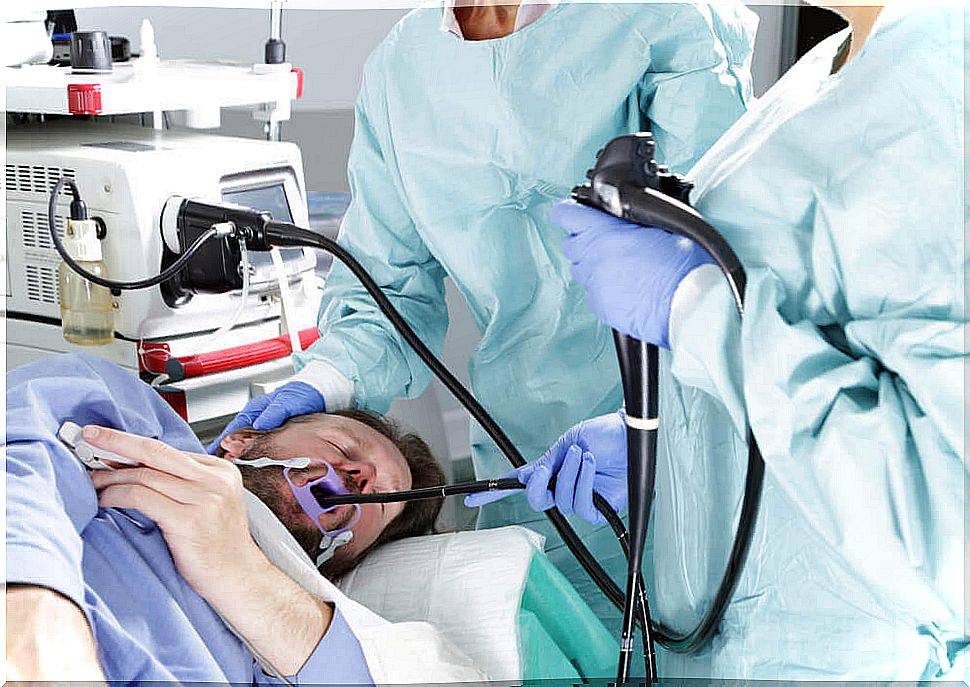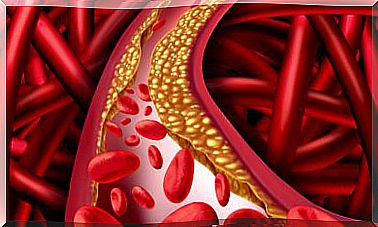Open Esophagectomy: What Is It And When Is It Performed?
Open esophagectomy is a type of surgery that, as its name implies, affects the esophagus. It consists of resecting or removing part of this organ. The esophagus is a kind of hollow tube that allows food to pass from the mouth to the stomach.
In total, the organ measures between 22 and 25 centimeters. As with other parts of the body, it can be affected by different pathologies. One of them is cancer, which is the main indication for open esophagectomy. In this article we explain everything you need to know about the procedure.
What is open esophagectomy?
Open esophagectomy is a surgical procedure. As explained by specialists from the Mayo Clinic, the technique consists of removing a part of the esophagus. In some cases, the entirety can even be removed.
During an open esophagectomy, if possible, the organ is also reconstructed so that it remains a continuous tube. Is, if a fragment is removed, parts of other areas are used to re- splice the ends.
In order to do this, an incision is usually made in the neck, chest or abdomen. This depends on the location of the injury to be resolved. The organs most used to rebuild the esophagus are the stomach or part of the intestines.
There are many pathologies that can be an indication of the technique. The main one is esophageal cancer. According to the Spanish Society of Medical Oncology, it is the sixth most frequent tumor of the digestive system. Furthermore, its incidence is increasing. This is because it is related, among other things, to gastroesophageal reflux.

Types of open esophagectomy
Open esophagectomy can be performed with different techniques. The main dissimilarity between them is the place where the incisions are made. Importantly, when it comes to esophageal cancer, it may be necessary to remove the lymph nodes and part of the stomach in addition to the esophagus fragment.
One of the techniques used is transhiatal esophagectomy. In this case, the incisions are made in the neck and upper abdomen. From the latter, the stomach and the lower part of the esophagus are freed from the surrounding tissues.
Then the damaged piece of esophagus is removed. From the healthy ends, the reconstruction is carried out, which, as we have mentioned, is usually done with part of the stomach. Once the process is finished, a tube is placed so that the patient can be fed during recovery.
Another open esophagectomy technique is the transthoracic one. It is similar to the transhiatal, only that the incision is made in the chest, instead of the neck.
Finally, an en bloc esophagectomy can be performed. It is the most aggressive of the three. The cuts are located on the neck, chest and abdomen. It is used to remove the entire esophagus.
When the latter is used, it is usually because it is a very advanced cancer. Partial reconstruction is possible by joining the stomach to a preserved portion of the upper esophagus.
Minimally invasive esophagectomy
In some cases, open esophagectomy can be substituted for a less invasive one. The technique consists of removing part of the esophagus by laparoscopy or thoracoscopy. That is, through small incisions with a device that has a camera at the tip.
In this way, complications associated with surgery, such as infections or bleeding, can be reduced. However, a study published in Cirugía Española explains that there is still not much research to confirm that this technique is more effective against esophageal cancer.
Why is it done?
As we have noted, the main indication for open esophagectomy is esophageal cancer. In some cases it is not done to cure the neoplasm as such, but rather to reduce symptoms. That is, as a palliative.
However, cancer is not the only indication. It can be used to treat non-cancerous conditions, such as achalasia. This is a disorder in which the nerves in the esophagus are damaged. This is why there are no muscle impulses and food cannot be pushed into the stomach.
As explained by the Medical Encyclopedia, transhiatal esophagectomy is often used to correct certain nerve problems. Also to reduce the lumen of the esophagus and make swallowing easier. In addition, it is a resistant gastroesophageal reflux treatment.
The transthoracic modality, meanwhile, is indicated when the cancer affects the uppermost part of the esophagus. Similarly, it can be useful for injuries that have occurred from ingesting a caustic liquid, such as bleach.
Risks of open esophagectomy
Open esophagectomy is a complex surgery that, like other surgical procedures, carries risks. Infection, bleeding, nausea and vomiting are some of the most relevant.
On the other hand, changes in the voice and difficulty swallowing may appear. The reconstruction area is sometimes damaged, so leaks may appear in the regions where the fragments connect. Finally, in a very small number of cases it can lead to death.
Aspects to consider
Before undergoing an open esophagectomy, it is very important that the patient and family members are informed about the technique and what it entails. There are a number of aspects that should be highlighted about the before and after the procedure.

Before the procedure
Before the operation, many complementary tests are usually carried out. The most used are computed tomography and magnetic resonance imaging. Especially in cancer cases, to establish the extent of the tumor.
In addition, it is very likely that it will be necessary to add radio or chemotherapy treatment. The days before the operation, you have to stop smoking and suspend some medications, such as anticoagulants.
Open esophagectomy has a slow and progressive recovery. The operation itself usually takes between 3 and 6 hours. However, patients must remain admitted to the hospital for a longer period of time. Therefore, the ideal is to go with comfortable clothes and personal items.
After the technique
The days after open esophagectomy can be difficult. Since the esophagus must heal, feeding is done through a tube. In fact, the catheter is usually kept for 4-6 weeks. Normal feeding will resume slowly.
It is recommended that, on the same day of the procedure, the patient walk and sit. It is normal that many medications are used to prevent pain and infection. Even respiratory physiotherapy may be recommended.
Results of open esophagectomy
Open esophagectomy is an increasingly safe technique, with less mortality. Most patients can return to normal life after a few weeks or a month. Except for food, which does take more time.
It is important to note that, although it is a surgery with risks and complications, it is a good treatment option for many pathologies. In fact, it is the one that usually obtains the best results in esophageal cancer.
However, it is essential that anyone facing this situation has sufficient information and support. Especially in neoplastic and oncological cases.









